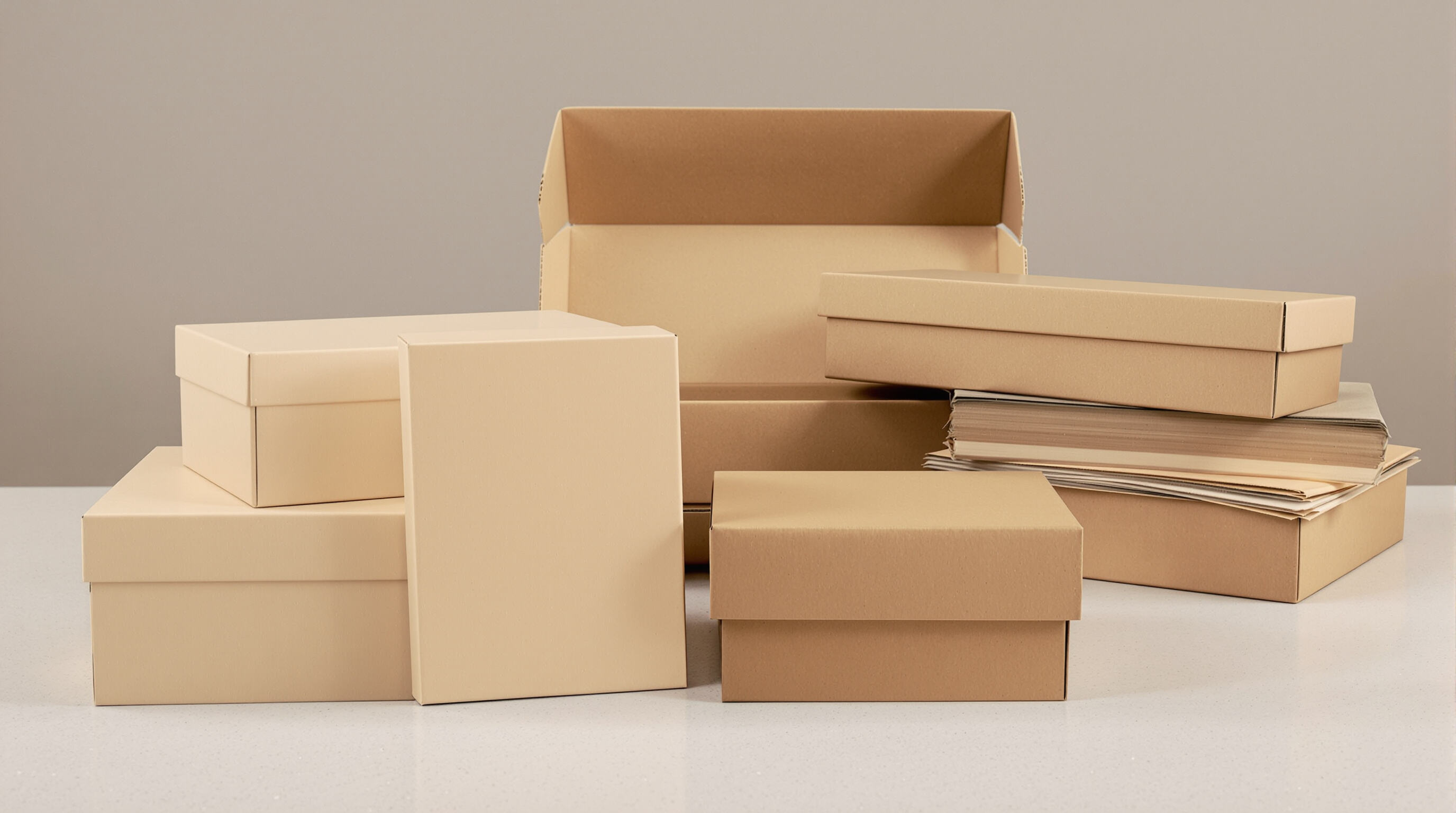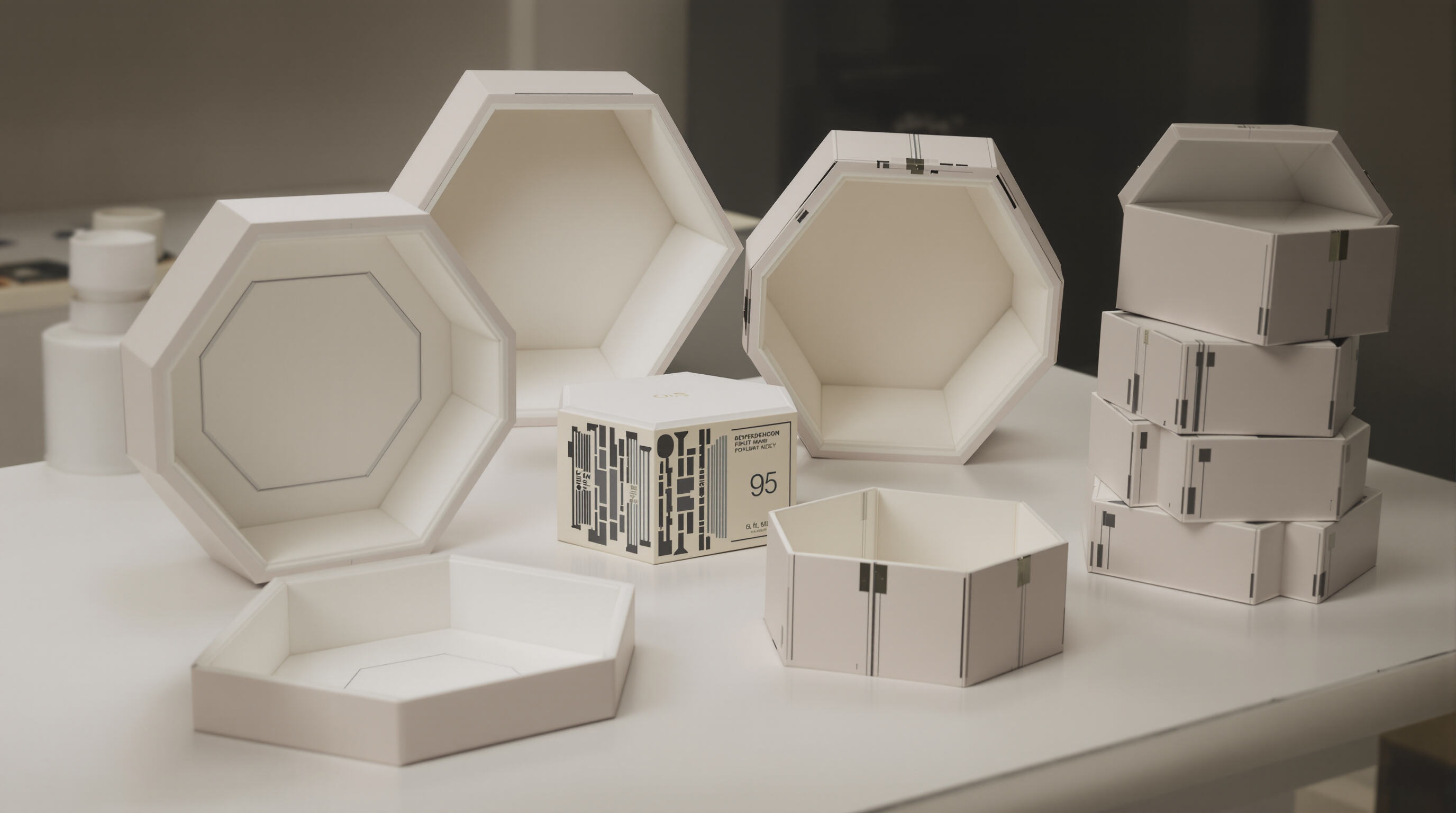Core Materials That Enhance Durability in Customized Gift Boxes

Corrugated Cardboard: Fluted Layers and Impact Absorption for Small Appliance Protection
The fluted inner layers of corrugated cardboard work kind of like shock absorbers, spreading out forces through that honeycomb pattern we all know so well. Custom gift boxes made with this stuff can actually hold about 38% more weight when stacked on top of each other than regular flat materials according to some lab tests from Packaging Digest back in 2023. When shipping fragile items like coffee grinders or those little handheld vacuums people love these days, those curved flutes really help prevent punctures since they cushion impacts from drops around 1.5 meters high which matters a lot for online orders getting delivered everywhere. Companies that switch to B-flute with its 3.2 mm wave height see roughly half as many return requests because of damage during transport compared to when they used the thinner E-flute option instead.
Rigid Paperboard vs. Kraft and Paperboard: Comparing Strength and Structural Performance
| Property | Rigid Paperboard | Kraft Paper |
|---|---|---|
| Tensile Strength (MD) | 55—65 kN/m | 70—85 kN/m |
| Compression Resistance | 18—22 psi | 12—15 psi |
| Moisture Tolerance | Moderate | High (uncoated) |
The interlocking fibers in kraft paper make it really good at resisting tears when packing oddly shaped appliances. Rigid paperboard on the other hand handles weight much better when stacked vertically. According to a recent industry report from 2024, around two thirds of small appliances weighing between five to ten pounds such as those little personal blenders actually travel better in boxes made from rigid board that has a density somewhere between 350 and 400 grams per square meter. But there's something interesting happening these days too. Kraft liners treated with certain types of plant based polymers are starting to perform just as well against crushing forces as traditional rigid boards do. This means companies can switch to greener materials without worrying about their products getting damaged during shipping.
Grammage, Caliper, and Material Thickness: Standards for Optimal Durability
Material thickness directly correlates with protection:
- Under 1 lb appliances: 200—250 GSM kraft (0.25—0.35 mm caliper)
- 1—5 lb appliances: Corrugated board with 3—5 mm flute height
- Over 5 lb appliances: Dual-layer rigid paperboard (450+ GSM)
Boxes meeting ISTA 3E testing protocols—a common shipping simulation standard—show 74% lower damage rates. Increasing wall caliper from 1.2 mm to 1.8 mm improves crush resistance by 210%, crucial for protecting glass-based appliances like air fryer lids during cross-country transit.
How Structural Design Maximizes Strength in Customized Gift Boxes

Rigid Box Construction: Maintaining Shape Under Stacking and Handling Stress
When it comes to building those sturdy boxes we see in warehouses, manufacturers typically use thick paperboard around 1.5 to 2 mm in thickness. This material can handle pretty serious pressure too about 65 psi worth when stacked high in storage facilities. A recent study from the Packaging Science Quarterly in 2024 found something interesting about these gift boxes made with rigid construction. They mentioned how the fibers inside actually lock together, keeping the box shape stable within half a millimeter even when squashed down. That kind of stability matters a lot because sometimes these boxes need to hold extra weight beyond just their contents maybe around 20 pounds or more. And this is really important stuff for things like electric kettles and other small appliances that get shipped all over the place without getting damaged.
The Role of Box Geometry and Wall Rigidity in Preventing Deformation
Box geometry directly impacts strength retention:
- Hexagonal designs reduce lateral stress by 23% compared to rectangular shapes
-
5 mm-thick vertical walls enhance load-bearing capacity by 38% (Packaging Digest, 2023)
Double-layered corner joints, common in customized gift boxes, increase stacking resistance fivefold while maintaining a streamlined profile.
Internal Supports and Die-Cut Compartments for Securing Small Home Appliances
Die-cut foam inserts reduce product movement by 92% during transit, according to ISTA-3A testing standards. For compact blenders or handheld vacuums, honeycomb-patterned partitions absorb 60% more impact energy than flat inserts. These structural enhancements, combined with anti-abrasion kraft liners, lower shipping damage claims by 34% for retailers shipping fragile home gadgets.
Reinforcement Techniques for Superior Protection During Shipping
Customized gift boxes require specialized reinforcement methods to ensure small home appliances withstand shipping stresses. Three proven strategies address common failure points while maintaining presentation quality.
Lamination and moisture-resistant coatings to preserve structural integrity
High-gloss or matte lamination adds a protective polymer layer, reducing abrasion damage by 35% compared to untreated surfaces. Moisture-resistant coatings prevent warping in humid environments, critical for appliances containing electrical components.
Edge protection, corner reinforcements, and dual-layer corrugation
60% of shipping damage occurs within 2 inches of box edges according to packaging engineers. Reinforced corners using fiber-reinforced tape and dual-layer corrugated fluting increase stacking strength by 4x, essential for heavy countertop appliances.
Case study: Enhancing a compact blender gift box with reinforced corrugated layers
A leading kitchen appliance brand reduced transit damage by 60% after implementing:
- Dual-layer E-flute corrugation around motor components
- Die-cut foam inserts securing blades and accessories
- Water-based coatings for humidity resistance during ocean freight
Matching Material Choice to Product Needs and Shipping Conditions
Selecting materials based on appliance weight, fragility, and value
When it comes to making gift boxes that last, the whole thing starts with picking the right materials based on what the appliance actually needs. Lightweight stuff like handheld mixers can get away with regular single wall corrugated cardboard around 1.5 to 2 mm thick. For those mid weight appliances we see everywhere these days, think compact blenders for instance, manufacturers usually go for double layered fluting or something sturdier like rigid paperboard in the 400-500 GSM range since they need to hold up when stacked in warehouses. The really expensive gear though? Premium coffee grinders and similar high end products typically come in triple layered boxes with foam inserts inside. These not only protect against bumps during transport but also look fancy enough to match their price tags. According to some research from last year, boxes made with properly matched material weights cut down on shipping damages by about a third compared to run of the mill packaging solutions.
Environmental challenges: Humidity, temperature, and transit risks
When products need to travel through humid areas, moisture resistant coatings really matter. Laminated barriers stop boxes from warping even when humidity hits around 85%. In places where temperatures swing wildly, special adhesives hold things together across a wide range from minus 20 degrees all the way up to 50 degrees Celsius. Reinforcing edges gives packages about 40% better protection against crushing during transport. And those extra layers at package corners help tackle the roughly 62% chance of drops happening in final delivery stages. All these smart additions fight off wear and tear from constant handling without making boxes so heavy they trigger additional shipping fees.
FAQ
What materials are best for protecting fragile appliances during shipping?
Corrugated cardboard with fluted layers, rigid paperboard, and kraft paper are some of the best materials for protecting fragile appliances. These materials provide shock absorption, impact resistance, and structural strength.
How does box geometry affect the durability of customized gift boxes?
Box geometry, like hexagonal designs, can reduce lateral stress by up to 23% compared to rectangular shapes. It can enhance load-bearing capacity and overall strength retention.
What is the role of internal supports in customized gift boxes?
Internal supports, such as die-cut foam inserts and honeycomb partitions, significantly reduce product movement during transit and absorb more impact energy, thereby minimizing the chances of shipping damage.
Why are moisture-resistant coatings important for gift boxes?
Moisture-resistant coatings are essential to prevent warping and add durability, especially for appliances containing electrical components, when exposed to humid environments.

